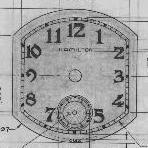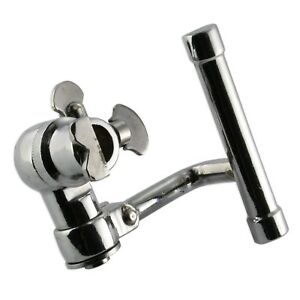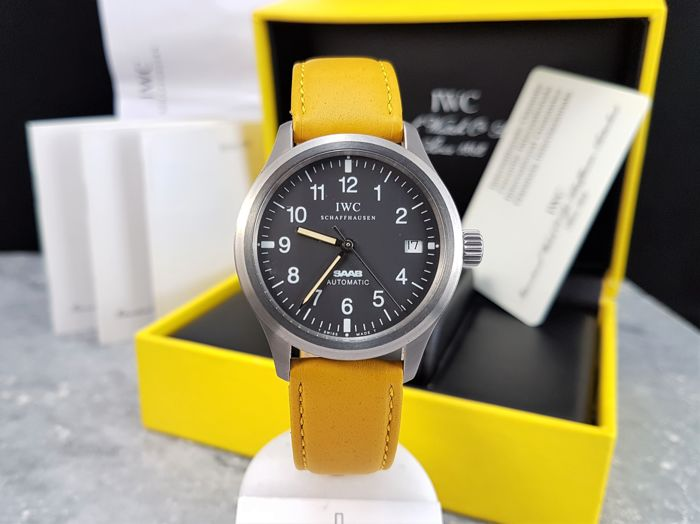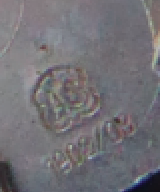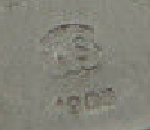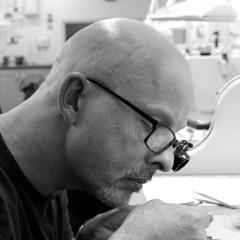Leaderboard
Popular Content
Showing content with the highest reputation on 02/22/21 in Posts
-
You can't get into dissecting anything on the graph until the amplitude is up, you'll want at least 250 degrees, better 270-280. What could be causing the low amplitude is a laundry list of things. -was the train free, did it move freely with just 1 or 2 clicks of wind and did the escape wheel reverse when it came to a stop? -endshakes all good? -mainspring and barrel in good condition? -pallet fork snaps cleanly to its bankings with just a few clicks of wind? -balance pivots in good shape, all jewels in good shape, hairspring in good shape? -did you peg jewels, especially the pallet fork jewels (and not oil the pf jewels)? -how did you clean? Is it oiled correctly? About any one of the above things could rob 100 degrees, with almost certainly the exception of the one thing everyone always goes at first- the mainspring.4 points
-
Most watchmaker lathes have plain bearings. The majority are hard steel spindle on hard steel stationary bearings, some have bronze bearings and some cast iron. Almost all are adjustable for wear (the only one I know of with no provision for radial wear is the Steiner design). All of these are what is known as "constant loss" lubrication. That means you put oil in the bearing, and it works its way out during use- either from gravity, or being slung onto your shirt. The downside it you have to check and top up the oil frequently. The upside is they are very tolerant of lubrication differences. Like John said you can use just about anything, and always, something is better than nothing. I have seen machines that are for all intents and purposes the same as a watchmaker lathe regarding the bearings, with many 10s of thousands of hours of industrial use, and they are almost always still in very usable condition. In larger machines where there is an oil reservoir, like large engine lathes, you have to be more careful about oil type. What John linked to above goes into it; essentially motor oils are designed to pick up any wear particles and then carry them to the filter where they are removed. In a machine tool, the idea is any wear particles will return to the sump and then decant out; with a motor oil they would be recirculated causing damage. In a constant loss system they will just become part of the oil mess on and around the machine. As I have a bunch of machines I don't mind buying a 5 liter jug of oil. I use an equivalent to Mobile Velocite 10, with is an ISO 22 oil for spindles. If I ran out of that I wouldn't hesitate to use sewing machine oil, or 3 in 1, or whatever oil was at hand. There are folks who repackage Mobile and other maker's oils in pints and sell on Ebay, I think a pint is about 10 bucks and should last an average occasional several years at least. I think it was mentioned above, but for cross slides you will want a slideway oil. You won't hurt it with other oils (but do not use grease!), but it will work better with slideway oil as they have tackifiers which help it stick to the different surfaces without causing "sticktion". Mobile Vactra 2 is the standard, and any other maker will have an equivalent, you want an ISO 68 slide oil. Again, can be found in smaller quantities on Ebay.4 points
-
Agreed, the first step is understanding the low amplitude, which is a kind of global health marker. In the spirit of starting at the mainspring, was it replaced? Does it have a white alloy mainspring? A common cause of poor amplitude is when the mainspring barrel binds against the arbor. It's a good idea to insert the arbor into the empty barrel, close it up, and check out the clearances. The empty barrel should spin smoothly around the arbor.3 points
-
The difference between 19800 and 18000 is 1800 beats per hour. That is the difference of 360 seconds or -6 minutes an hour (based on a 18000bph standard) or about -5 minutes 25-30 seconds (based on a 19800bph standard). So you theory that the wrong balance complete was used is very likely. I suspect if a 19800 balance complete was installed you issue would resolve. Let us know how it goes.3 points
-
There were numerous funny little lathe-type tools made for refinishing pivots over the years, usually with one pivot supported in a cone center and the pivot to be polished sticking through a hole in a thin support. The part (they were mostly intended for balances) would be spun by a bow or other means, and you'd go at the pivot with whatever you like to use. Wood with abrasive, stones, whatever. But there is no support for the little pivot, and using abrasives on pivots could possibly lead to some imbedding in the steel and eventually wearing the jewels, and other stuff that in my mind makes them pretty useless tools. For me the Jacot tool is the tool for finishing pivots. The pivot is supported along its length in the bed, the beds are graduated so that you can actually rely on them to stop your burnisher from cutting at a specific diameter*, and the burnisher does a dual job of both reducing the diameter and making the surface of the pivot significantly harder than before. So yes, a Jacot is the tool for finishing/refinishing pivots whether you have a lathe or not. I just glanced around and I see 3 Steiner jacots of mine in use, my main one and two I've loaned to others in my workshop, and I have two more for backup hahaha. I don't collect them- I just use them so much that it makes sense to have duplicates. *Not all Jacot tools have logical markings on the beds. But most, especially if they aren't totally ancient, will be marked in metric. A bed marked 10 should make a pivot that will fit a 0.10mm jewel (i.e. a few microns less than 0.10mm for the pivot diameter). It's good to get to know your specific tool, they can vary a little.3 points
-
That all sounds pretty spot on. The Bergeon burnisher works much better haha. Especially for conical pivots, I think you'll find the Vallorbe is only good for large pocket watches (the radius is too large). Strokes at maybe 2 back and forths per second. Force, that's hard to explain, but probably more than you think. Like a pound? Half a kilo? Half that for small pivots. Very fine oil. Traditional here is pure lavender or almond oil, but 9020 or 9010 is ok (but expensive). For some reason the natural oils seem to work better. The rest is just practice! Also- there's no need for further polishing with an abrasive. Part of the point of the Jacot is not finishing with abrasives.2 points
-
I suspect in real life you could use almost any oil including automotive oil to lubricate your way and you probably be okay. Yes there's better stuff to use but our applications aren't really that critical. For instance the first link. This roll down far enough somebody tells a story of basically someone in production during the war couldn't get the proper oil used SAE 30 automotive oil And after running it for quite some time to take it apart there is no problem at all. https://www.practicalmachinist.com/vb/south-bend-lathes/spindle-oil-320198/ Farther down the discussion is a reference to avoid lubricants with detergent. apparently non-detergent oil to wash any particles out which makes me wonder what particles were talking about? It's a problem of comparing machinist lathes with watchmaker's lathe is they've not exactly the same. Here's an interesting website and of course they are view on lubrication http://www.lathes.co.uk/latheparts/page17.html They also have a nice section on watchmaker Lathes http://www.lathes.co.uk/watchmaker/ We start off with the usual basically nobody has any idea what they're doing even though they do mean well. Which is typically the way always discussions are going. At the very and though the last one it looks like #6 is what were supposed to be using and then there's some references to automobile oil. Apparently though 3 and 1 is out. https://mb.nawcc.org/threads/lubrication-when-using-the-lathe.28810/2 points
-
I think you would have to weigh the risks vs benefits involved. And I don't think much can be done about the bled out spots on the chapter ring even if you manage to get the glass off. I would just leave it alone.2 points
-
Lemania chrono? first attempt to service.? You are a brave man. Welcome to the forum. Regs Joe2 points
-
Hi there WellAdjusted .Well at my workplace we are not allowed to wear wristwatches and so what I did was pick a good clean tractor (pin pallet pocket watch ) out of my collection .All i have done is I removed the movement from the case then I removed the dial and hands .Then I ran it through the ultrasonic in lighter fluid ,then in a rinse ,dried it out . Now the next bit happened out of laziness and I thought this would be a good experiment .I was getting prepared to oil the watch after checking the condition of the pivots ,end shake and so on .The movement is in very good shape .I looked across the bench and realized I had put my oils away except for 2 which were unopened .One was D5 and the other 9415,so I thought what the heck ,D5 for the mainspring and 9415 for everything else including the balance pivot cups .3 years on I can see the 9415 on the pivots and time changing mechanism ,which by the way is buttery smooth .And yes I have kept this watch wound every morning sometimes at night as well and it has kept perfect time . Yes it's just an experiment but the watch operates very smoothly so I am going to give it a dress up of superluminova and post more pictures . .This was an accidental experiment that so far has amazed me .2 points
-
I suppose who gave this answer was talking about the past, and even if I can't say for sure, I think that is not the reason. As I have mentioned before, King Seiko and Grand Seiko were sold exclusively in Japan but that doesn't mean they were worked on only by the manufacturer. Back then and now as well there were reputable indipendent Japanese watchmakers, just like there were and still there are others which specialize in premium Swiss makers. It was purely customer's choice to decide who give his high segment watch for service or repair. So you have easily found the series 56 parts list (that is all a competent watchmaker may need, and mostly to reference parts by numbers instead of names), its just that until now who had the equivalent for series 58 did not bother digitalizing them and now they may be sitting under tons of other papers Buddha only knows where. Note, this long worded explanation applies only to vintage King and Grand Seiko. Wiith the contemporary Grand Seiko the makers tries hard (and succesfuly) to have these worked on by their own atelier in Japan. Guess from wno they must have taken inspiration.1 point
-
The slots get burrs around them from the chuck being tightened and loosened without using a rod in the hole visible in your pic, but counting on the key to keep it from turning. Sounds like you fixed it, in the future run a small India stone along the sides of the slot, you'll feel the burrs. And make a bar to hold the chuck arbor when tightening and loosening.1 point
-
I am glad Repivots has already done the calculations.? In case a new oscilator is expensive, you might want to consider speeding up this one. Regs Joe1 point
-
1 point
-
1 point
-
One transistor you get in the range of 30-40 dB of gain. Two transistors will get you 60-80 dB of gain. More gain for less sensitive sensor...less gain for more sensitive sensor.1 point
-
Hi Frank, My intention has not changed since my first post on this topic. I want to use my microphone with open source TG and now with WOS. So far I like the one transistor solution the best working example, and it is not too simple, it is too difficult. ? Remember, "simple is beautiful". I asked many question not just because I want to make my microphone work, but i want to understand the principles and the ideas behind designs ppl used. I want to learn. Why rochelle salt was used in the past? Why one transistor, why two? Why piezo, why the green bimorph? If bimorph, how to use it properly? Does it matter how you glue it? Why Mark and Jamez reported with the green bimorph that they have not used pre-amp? I thought that that green bimorph has some magic property - as both of them used it - which would allow us to leave pre-amp behind. It turned out that Mark actually has a pre-amp, which he possibly did not know about. Or maybe his setup has changed since his post in 2014 and the videos published years later, but what about Jamez? I am in the process to order transistors, piezos and possibly the green bimorphs too and I might do some experiments with them as time allows. I might even grow my own crystal if the lock down will last long. ? Best regards, Lui1 point
-
I might just try that 9415 trick on a watch. I have heard of people using it for the bearings of 7J jewel watches, so it might be worth an experiment someday.1 point
-
1 point
-
The old watchmaker lathe motors that were common in the U.S. were universal (AC/DC), with quite a high top speed of 6-10,000 rpm. They were typically controlled with a rheostat foot pedal. The main issue with them is they have very little torque once you reduce the speed; thus they often had very small pulleys which already gave something like a 3:1 ratio to the large step on the lathe pulley, and in better cases were used with a countershaft which allowed further reduction. There were generic countershafts available to fit right on to most motors too. When I was starting out I had one of the latter, and coupled it with a Variac and a foot switch that was press/on lift/off as I hated hunting for speed with my foot. Even with the countershaft they tend to slow down as soon as you start cutting. If you get serious about turning it's worthwhile to look at some constant speed (near) constant torque options; there are industrial sewing machine motors to be found on Ebay that fit the bill, and the Sherline motor setup is quite good too. I use a 3 phase constant speed motor with countershaft haha but there's 3 phase power available everywhere here.1 point
-
I didnt know it is bronze bearing in some lathes. But this i know: i have some experience(from repairing and forums) at Sachs light motorcycle motors from the 50-60is. They have bronze bearings inside, and if modern engine oils is used, the additives in these are agressive to the bronze. Heavily etse damage at the bronze over time. Important to use GL-1 oil(without additives) in those engine, and not GL-2-4 motor oil.1 point
-
Always nice if you give us a photograph. Otherwise we get to use our imagination of what you're describing and the answers will probably not be very helpful so we really need a picture or two or three.1 point
-
Hi Hector Both holes look original and dont appear to have been bushed. The method in doing these is the same as any re bushing job, making sure you broach or drill the hole central. the attaced noted will explain the procedure. I use a small drill in the drill press drilled under size (bush Size) and breach to fit thn broach the pivot hole. when done try the wheel and the adjacent one for smooth running. 1002416176_BushingUsingHandTools.pdf (2).pdf1 point
-
On behalf of anyone else with a third world internet connection, if you post it to YouTube, then share a link, those of us without bandwidth can view it as well (it's also really easy to post videos that way).1 point
-
Hi Many of the 3/4 plate pin levers were for the working man and as such were build with that in mind . Robust and no fancy frills just a working watch. Kind of like the smiths and ingersoll 3/4 plates. Most of the local farmers had them some in a second cover so they did not suffer too much in the pocket along with the nails .screws baler,twine etc. they went for years and never saw a service.1 point
-
Take a look at this place, you will probably find timely information. https://www.etimer.net/1 point
-
Furthure to above, you see Dr ranfft lists AS 1902/ 03 & 1906 as a new generation of the family, all members beat at 21600 per hr. So the escapement is the same on all three members therefor escapement parts are interchange between 1902/1903/1906 regardless of bridge layouts. First member of the family 1902 offers higher beat to the market, couple of years later a new feature is needed to keep bringing customers in, so a date complication is added and a new memeber; 1903 is borned, by the same token day complication comes and 1906 to attract newer customers.? So apart from complications, all other parts interchange between members of this generation,1902/1903/1906, in addition, parts( other than those of escapement) of the BASE caliber 1712/1713 ......( interchange with new the generation as well ) fork arbour might interchange too. Hope this helps to gather more out of Dr ranfft database. Best wishes. Joe1 point
-
Hi again @aoleite Whilst there is a general standardisation that manufacturer and a model indication appears under the balance, the latter aspect varies depending on the whim of the manufacturer. Here is the ID from a 1902: As you can see it has the same 1902/03 you see. My guess in your case is that the addition of a day came sometime down the road and with a large stock of existing general 1902/03 plates AS just added a 1906 stamp underneath to indicate the specific model. That is your model i.e. you specifically have a 1906 but this is based on the 1902 (as is the 1903). This guess is also informed by the fact that I can find an AS with just a 1903 stamp on!: In this case AS just stamped the exact model on ... the assumption to me here being that AS had a large order of 1903s to complete and thus it was viable to change tooling to put the exact model on for that run! The point is don't worry about how those IDs are appearing on your particular movement. A movement can only be one model because of its makeup and we're saying yours is definitely a 1906. But of course that just means changes on the dial side because of the day and date aspect. The bridge/workings side should be the same for any 1906 (don't worry about watch brand markings on rotor or similar); where do you feel you're seeing differences? If it helps here are pictures from a service of a 1906: https://watchguy.co.uk/cgi-bin/library?action=show_photos&wat_id=1267. This might give you the confidence to see what's involved. My gut instinct is there are no pieces missing on your movement by the way. Why would there be unless someone disassembled the movement and missed out a random part on reassembly it. Is that likely? Far more likely the movement just needs a good service. Anyway, what's the current situation? Is it fully wound but not beating? Does it wind but noticeable slip so the mainspring isn't holding power? Have you an air puffer you can gently coax the balance wheel with ... does this oscillate smoothly? If you do take anything apart take lots of pictures. When you're starting out it's easy to think "I'll remember where that goes" but that confidence can fade weeks later when reassembling! ?1 point
-
1 point
-
True... The endshake of a Waltham pocket watch will be very different to a ladies watch of about 6.5 lignes, not just because of size, but also, as you said, manufacturing tolerances, but some figure is helpful for the usual 10.5 to 13.5 ligne wristwatches from the last 50 years or so. The figure I gave was for modern 'industry' standard, which are mainly Swiss and not an 'industrial' standard. I understand that facts and figures tend to be subjective, that's why I end sentences with 'I believe' because it isn't making it an absolute fact, because it is my belief.1 point
-
1 point
-
The normal tool used is the cutting broach then followed by the smoothing broach, Thos smoothes out any edges and hardens the hole to some extent, being smooth aids the pivot with less friction.1 point



